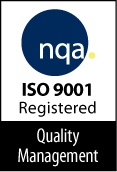In the third part of our series entitled Important Considerations when Shopping for EDC, we will discuss and create the EDC Scoring list for your organization. We will continue to examine why the best products are supported by lean sales staff and how great products sell themselves.
Phase 3: Create the EDC Scoring list for your organization
After you have completed your requirements definition in phase 1 and compliance requirements in phase 2, you should next apply a weighting to each of the requirements. This will help the team remain objective throughout the process. There are numerous features inside an EDC System, some of these are essential for your needs and others you may never utilize. Before you begin your quest for an EDC System, it’s vital to assess which features are required for your work process and those that are not as critical. Begin by characterizing the core functionality you should have (Must Have) and any extra modules or features that might be required later on. It is useful to organize these necessities as simply as “Must have “, “Nice to have “and “Not required” or a more elaborate scheme scoring them with a weighted multiplier. Choosing a system then becomes a matter of selecting those systems that score the highest.
But try as we might, we cannot always be as objective as we would like. Nor should we be. There are many subjective factors that may play into our decision, such as:
Completeness of Vision: What lessons does the vendor bring from the clinical trial market and how have they adjusted their current strategy and products accordingly? Can they bring lessons from other industries that are more advanced in their adoption of analytics? What is the vendor’s understanding of the present market and industry requirements? What is the vendor’s vision of the future for clinical analytics? Look for vendors who can clearly outline how they have evolved to meet — and more importantly, anticipate — industry needs.
Culture and Values of Senior Leadership: The overall culture of a company starts at the top. Get to know the senior leadership of the vendors you are evaluating. Insist on meeting several members of their executive team. Simply put, do the culture and values of a vendor’s senior leadership align with yours? When interacting with individual members of the vendor’s team, ask yourself, “Would I be excited to hire this person into our company?” If the answer is consistently “no,” find another vendor. More than technology is required to leverage clinical analytics to drive real, sustainable change. Cultural transformation will be required throughout your organization. If your culture and values don’t mesh with that of your vendor, you will encounter significant roadblocks to success.
Ability to Execute: Does this vendor have a track record for delivering value and satisfaction to their clients? Find at least three, preferably five, referenced accounts. Do not accept referenced accounts that are pre-screened and selected by the vendor — every client of the vendor should be open to serve as a reference. Do the vendors you are considering have solid referenced accounts that are similar in size and demographics to your own company? Ask these references very simply: How satisfied are you with the vendor’s products, services, and overall value? Would you hire them again?
Technology Adaptability and Supportability: The reality is, in today’s connected world, all businesses, including pharma, move at the speed that their software can adapt – either fast or slow – to new processes and business models. Therefore, the underlying engineering and architecture of that software is critically important. You must peel back the covers of the vendor’s products and evaluate their software engineering for modern design patterns like object-oriented programming, service-oriented architectures, loose coupling, late binding and balanced granularity of software services. Glossing over this assessment is akin to buying a multimillion dollar office building without assessing the modularity of the walls and soundness of the foundation, plumbing and electrical systems. How fast can the system adapt to the market and your unique needs for differentiation? Data standards, vocabularies and clinical analytics use cases are changing rapidly in the healthcare industry, literally every day, with no signs of slowing down. Find a vendor whose software engineering can keep up. Analytic agility is critical. Executives in your organization can’t wait weeks and months anymore for a new report to inform a critical decision. The industry is changing too fast.
Company Viability: Will the vendor be around in nine years (the average life span of a significant IT investment)? If not, can you live without them? What are these analysts saying about the vendor’s prospects in the market? Is the vendor in solid financial shape? What’s their monthly burn rate vs. income? How many days’ cash-on-hand do they maintain? What does their sales pipeline look like? Does the vendor’s executive leadership team have a track record for jumping from one company to another or do they have a track record of longevity and success? How much is the vendor spending on sales staff in comparison to engineering and product development staff? The best products are supported by a very lean sales staff. That’s because great products sell themselves.
Next week, we will examine obtaining a demonstration or sandbox access.

